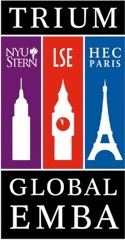the ace hotel: how a low-margin, highly-competitive business gets a CEM makeover
 Thursday, October 11, 2012 at 10:20AM
Thursday, October 11, 2012 at 10:20AM “I love the Ace Hotel,” says Miriam, an executive with a major dot.com. “Let’s meet there for breakfast.”
Whenever Miriam and I are in the same town (recently, New York, Paris, and Washington DC) we like to catch up on all things social networks, user generated content, and customer experience management. You’d be hard-pressed to find a more savvy person than Miriam in judging both tastes and people.
So when Miriam recommends the Ace Hotel in New York City for some of their famous scrambled eggs, I don’t hesitate to put it in my iPhone calendar.
Not just a hotel, but a scene
When the New York Yellow Cab dropped me in lower Manhattan at the designated corner, I had trouble finding the entrance. Under normal circumstances, my CEM alarms would have been going off: after all, creating a strong sense of arrival is an important part of establishing a baseline for your branded hotel experience, right?
But I’d been hearing about the Ace Hotel for a while. Starting on the West Coast of the United States in decidedly hip cities of Seattle, Washington and Portland, Oregon, I knew that they’d been trying to reinvent the hotel experience, and I accepted the lack of arrival experience as – possibly, anyway – a piece of their new brand.
In fact, there’s something decidedly upside down about the Ace Hotel’s brand. It doesn’t try to be what many hotels are. It’s trying to evoke a hip, music- and fashion-oriented “scene” where you immerse yourself in culturally iconic signs and symbols. The rockster semiotics of the place make it work.
The challenge in the brand is that everyone feels like a rock star (or wants to), and yet they also have to make a brand desirable – out of reach, if you will – so that people will pay attention and seek out what they don’t have. (All great brands generate desire.)
Entrepreneur Magazine hints their approach: “The Ace Hotel brand is so cool, it even has its own special-edition Converse high tops [sneakers]. Alex Calderwood, co-founder and creative mastermind behind the industry's hippest hotel properties, is showing off a pair to his business partners, Wade Weigel and Doug Herrick, in the airy, stripped-down lobby of the Seattle Ace.”
 “Once the kicks [sneakers] go on sale next month--$100 for the midnight blue two-toned, gummy-soled style, with only a few hundred pairs available exclusively at the hotel's shops--Calderwood will join a short list of people deemed cool enough for the privilege, like designer John Varvatos and Outkast rapper Big Boi. This is rock-star status, without the rock star.”
“Once the kicks [sneakers] go on sale next month--$100 for the midnight blue two-toned, gummy-soled style, with only a few hundred pairs available exclusively at the hotel's shops--Calderwood will join a short list of people deemed cool enough for the privilege, like designer John Varvatos and Outkast rapper Big Boi. This is rock-star status, without the rock star.”
Converse brand high tops are a perfect brand pairing with Ace. It’s downscale and retro – and currently still hip in many youth culture circles. Hipness is enhanced by the high price and collectability of the Ace Hotel model. But most importantly, the shoes echo the hotel brand’s devotion to cultural icons, music, and fashion. At the same time, the Ace Hotel sticks with its Pacific Northwest roots by offering great seafood and Stumptown coffee – a coffee so good and so un-Starbucks that it becomes a connoisseur brand, while remaining completely common-man and hip.
Meet your new concierge, whose funkiness resets expectations and boosts profits
When most luxury, hip hotel brands – take the W Hotel for example – greet you at the door or concierge desk, you still interact with “hotel professionals” whose very uniforms alert you to their training. The valet team can wear long green coats with gold epaulettes. The concierges wear business attire and look very well put-together.
Not at the Ace. The entire brand concept gets communicated from the curbside: it’s a hidden hotel, with non-uniformed hipsters opening car doors and hailing cabs, and hotel clerks who look like they are actually interesting people in their own right. Well, I say it's non-uniform. But it’s uniform in the sense that Ace hotel personnel have a disciplined style guide for their hipness. But it doesn’t look buttoned-up like W Hotel, or for the now-tragically unhip Four Seasons. And the valet guys and gals can just hang out at the door, slouching and chatting, and it's just fine - for them and for the brand.
One benefit of resetting expectations for the Ace Hotel chain is that it can redefine the economics of running a hotel. That’s a critical advantage given the notoriously slim margins made by many hotels.
The advantage comes from reinventing the standards to which you are held. Other hotels are likely to live or die by “customer satisfaction,” and so probably have some sort of playbook inspired by a boilerplate “hotel quality standards” list from JD Power (see for example the J.D. Power and Associates 2006 North America Hotel Guest Satisfaction Study). Luxury hotels in the J.D. Power recommendations must feature high speed internet access, pillow-top mattress, and WiFi. As you move downscale from luxury, through upscale and mid-scale full service to economy or budget, the must-have lists actually get longer (complimentary breakfast, big-screen TVs, and so on). With lists like this putting all hotels onto the same road to customer satisfaction, it’s not surprising that most hotels end up feeling alike with tight margins that reflect their sameness.
In fact, the existence of a funky concierge makes it completely acceptable to customers that the Ace offers bunk beds in some of the rooms. Other rooms have functioning turntables (yes, you can spin your own vinyl). The very hipness and hominess allows Ace Hotel to actually be a little bit sloppier and friendlier than other hotels. And, maybe, cheaper to design, appoint, and maintain.
Not just about keeping costs down, but keeping profile up
Luxury trends in hotels, according to Karen Weiner Escalera in her December 2007 article in Hospitality Industry, hold true today. We see it in our own business activities in my partnership, which does investment advisory for luxury hospitality brands. These trends include many that Ace Hotel is leveraging:
- Interests and connoisseurship dominate hotel choices.
- Stealth wealth: boutique hotels that offer one-of-a-kind objects and more personalized service attract the wealthy.
- Creativity. Ace Hotel featured the creative French band Revolver and broadcast them live from their New York Hotel. The fact that you have a turntable in your room means you are creative, too.
- Products are out; experiences are in. The Ace Hotel Converse high-tops are not luxury products. In fact, they could never be mistaken for luxury products. The point is to evoke a self-image, and in doing so create a unique and memorable experience.
For Calderwood, the big brand value to deliver is “cool”. For him, you can only do that if you create intimacy, include everyone at every economic level and acknowledge their interests and essential dignity, be interesting, and be original.
What is remembered is as important as what is bought
If you want proof that the J.D. Powers satisfaction approach doesn’t yield memorable branded moments, just take a look at the cloud tag I generated from the top 30 Yelp reviews of the Ace Hotel in New York. Of course the biggest words are the ones used most often – and they’re pretty common words, as is expected from tag clouds. The ones in middle sizes become more important. So look past the biggest words (Hotel, Ace, Room, Lobby). What are people talking about?
If I were to put together sentences from these mid-sized words, they would read like this: The Ace Hotel is a great, comfortable place, with friendly people, helpful staff, comfortable couches, and coffee. It’s cool, you can have a really good time between the bed and bar, and there’s nothing like it.” If you go to the really small text, you’ll see how the hotel elicits these comments: the restaurant, shop, bunk beds, fridges, and details in the bathroom. There’s also something in there about dog food, which I bet you is a compliment.
Notice, nothing about WiFi, high speed internet, pillow-top mattresses or complimentary breakfast.
My friend Miriam loves the Ace Hotel. And now, so do I. Given that the first Ace Hotel in Seattle was cash flow positive before its first year was over, you can bet owner Alex Calderwood loves the Ace Hotel, too. It pays to be original.





Reader Comments